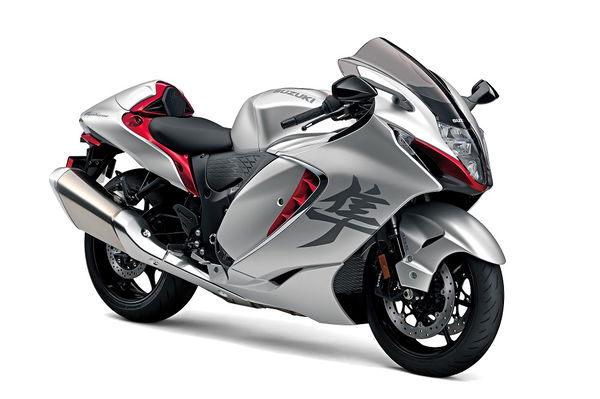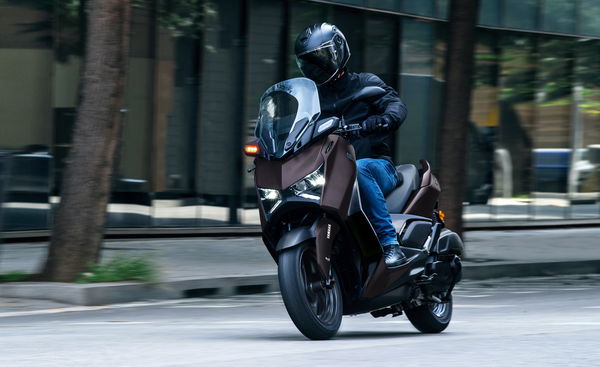Top 10 original and ultimate motorcycle ‘Kings of speed’
The arrival of Suzuki’s new Hayabusa is big news – especially when it comes to bikes which claim to be the ‘Kings of Speed’.

THE original 1999 ‘Busa, by being capable of nearly 200mph, was most famous for dethroning Honda’s Super Blackbird as the world’s fastest production motorcycle.
While the Honda itself, when first launched in 1997, grabbed headlines, not for its finesse but simply for how fast it was – in the process leap-frogging the previous speed king, Kawasaki’s long-reigning ZZ-R1100.
New Suzuki Hayabusa 2021 | specs, details, and features
There have been plenty of others, too, over the last three decades or so. Brilliant ‘Bahn-stormers such as BMW’s K1300S and another Kawasaki, the often-overlooked ZX-12R – and what about the original hyperbike: Kawasaki’s equally largely forgotten ZX-10 of 1988?
Of course, when it comes to outright speed, much of this is now largely academic. The arrival of the original 1999 Hayabusa and with it speeds of 200mph proving so alarming the major manufacturers agreed to a ‘gentleman’s agreement’ restricting the speed of such machines to 300kph (187.5mph), stopped the speed escalation – but it didn’t stop the bikes.
So what have been the greatest motorcycling ‘speed kings’ of the last 30 years? What were they like and what were they capable of? Here’s our most recent 10 best, leading up to the new Hayabusa, in chronological order…
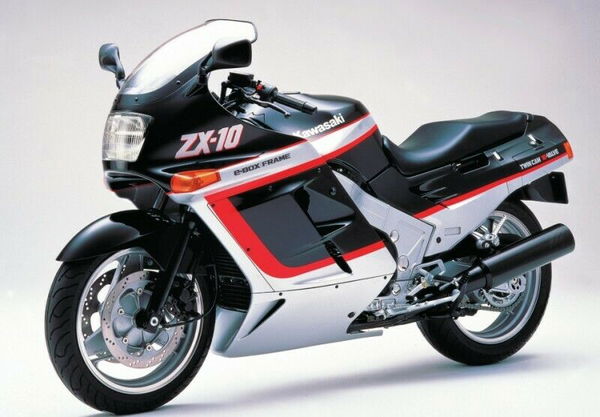
1988-1990 Kawasaki ZX-10 – 137bhp/167mph
After the more powerful but also more cumbersome 1986 GPZ1000RX failed to supercede the brilliant, game-changing GPZ900R of 1984, Kawasaki responded letting the Ninja 900 live on (it eventually remained in production for 19 years right up to 2003). Instead, it re-invented the larger version as, arguably, the first ‘hyperbike’ – an ultra-powerful heavyweight designed primarily for sustained, stable, comfortable very high speeds and with the big aerodynamic fairing and bulk that goes with it. It succeeded, too. Where the steel-framed RX had been criticised for being unwieldy and ‘weavey’, the ZX-10, with its new, massive ‘E-Box’ aluminium beam frame and revised aerodynamics was more stable and assured. It was also more powerful, with 137bhp from its 997cc compared to the RX’s 125, enough for it to be hailed as the new king of speed with little consideration for track handling. That was now instead the domain of machines such as the FZR1000 Genesis. But with the ZX-10, the ‘hyperbike’ was born.
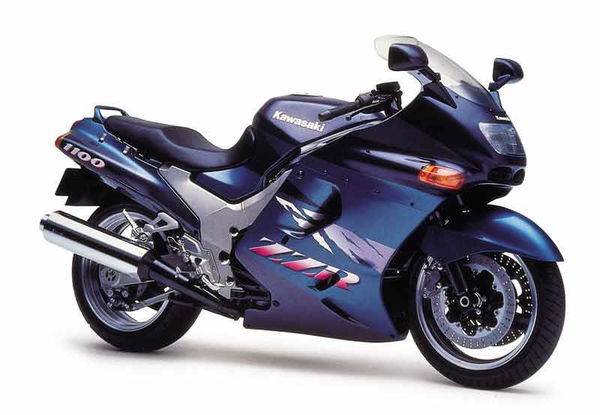
1990-1997, Kawasaki ZZ-R1100 – 147bhp/177mph
Two years after the ZX-10 Kawasaki reinvented its boss hyperbike and the result, the ZZ-R, which evolved through two distinct guises, was so good – and so fast – it remained the undisputed ‘king of speed’ for the next seven years. Although developed from the ZX-10, the ZZ-R was new in virtually every respect. The big, liquid-cooled, DOHC, 16v four got a 2mm bigger bore taking capacity up by 55cc to 1052cc. This, along with Kawasaki’s first ‘ram air’ forced induction system via a scoop in the bike’s nose helped boost power by almost 10% up to a monster 147bhp. At the same time, the ZZ-R also got more aerodynamic bodywork, a beefier aluminium frame, fatter forks, new fatter, lighter 17inch wheels (the ZX-10 had an 18in rear) and even better brakes and clocks. The result not only accelerated like a missile (despite its slightly higher weight than the ZX-10), it had a significantly faster top speed, plus it handled reasonably and could whisk two away in comfort. And if all that wasn’t enough, Kawasaki then updated the original C model ZZ-R into the D version in 1993. This featured further refined bodywork now with a twin ram-air inlet, a lighter frame, new exhausts, noticeably improved build quality and better ergonomics. It was enough for the ZZ-R to stay on top for four more years.
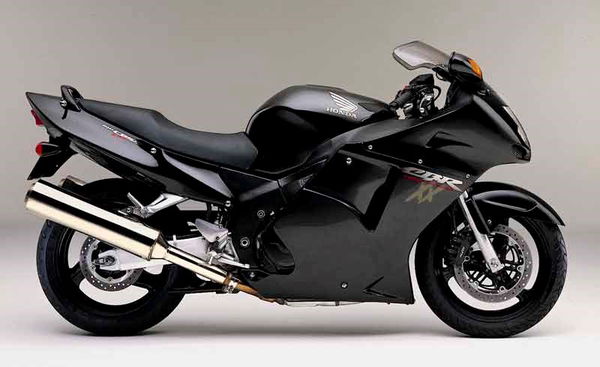
1997-2005 Honda CBR1100XX Super Blackbird – 162bhp/188mph
When Honda sets out to achieve something it usually does so and with the Super Blackbird it did just that. Conceived as a no-compromise ballistic sports-tourer fast enough to dethrone the ZZ-R but also set new benchmarks for comfort, refinement and class, it was launched in 1997 and immediately redefined the category. The key reasons were three-fold. First, although conventional and derived from that of the FireBlade, the Blackbird’s liquid-cooled 16v four-cylinder engine was enlarged to a whopping 1137cc and tuned to give a huge 162bhp – a full 15 more than the ZZ-R. Second, it took aerodynamics to a new level with a narrow frontal aspect, helped by ‘piggyback’ headlights, which helped ease the big Honda to a new class-leading 188mph. And third, and perhaps most importantly, the Blackbird was also built to raise handling, refinement and versatility in the class, as well, which, via a sophisticated chassis, twin balance-shaft equipped motor (for smoothness), comprehensive dash and so on, it unquestionably achieved. And, in case you were left in any doubt about its prowess, Honda even named it after America’s ‘world’s fastest’ SR-71 spy plane then launched it at Paul Ricard in France, renown for its ‘world’s fastest’ straight. Uprated in 1999 with fuel injection, bigger tank and other detail changes, although overtaken for sheer speed by Suzuki’s Hayabusa in 1999, the Blackbird remains revered to this day for its combination of speed, surprising practicality, durability and class.
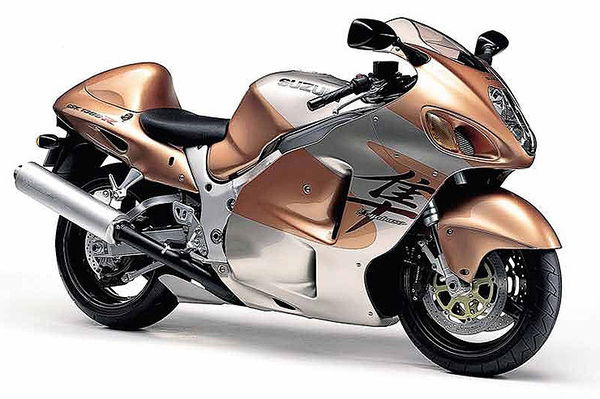
1999-2007, Suzuki GSX1300R Hayabusa – 175bhp/190.1mph
The last bike to conspicuously aim to be ‘fastest’ and the one which, by achieving just that, led to the 300kph impasse still in force today. Suzuki’s approach to being fastest was a simple one – even more power and even more extreme aerodynamics. The former was achieved via a fairly conventional liquid-cooled, DOHC, 16v four, but one displacing a monster 1298cc (161cc more than the Honda) and boosted by even more extreme ram air, the result producing a full 13bhp more than the original Blackbird. Even more significant, however, was the new Suzuki’s extreme aerodynamics, which also resulted in a more low-slung riding position. In terms of speed, the result was a recorded 190mph+, with some test bikes clocking around 200 in favourable conditions, enough to set alarm bells ringing and result in later bikes being restricted. Some early bikes also suffered from rear subframe breakages, leading to its aluminium design being updated to a steel one. It also led to the Hayabusa – the Japanese for ‘Peregrine Falcon’ and so named, legend has it, for its diet of Blackbirds – becoming a legend in its own right, something it retains to this day.
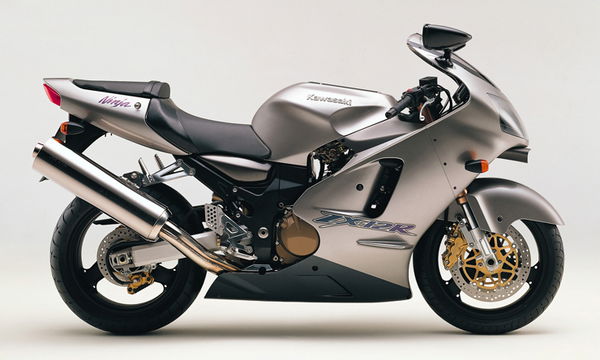
2000-2006, Kawasaki ZX-12R – 178bhp/188mph
The replacement for the ZZ-R11 was conceived to wrest back the king of speed crown for Kawasaki but was thwarted by the imposition, in 2000, of the new 300kph ‘gentleman’s agreement’ restricting its top speed. Even so, with the most power in the class and also, along with effective aerodynamics, a lighter, more sporty chassis than the Haybusa, it was arguably the best all-round performer so far and one deserving of greater success and longevity. Instead, without becoming conspicuously the new ‘king’, the ZX-12R was unfairly overlooked and not the success it could have been. The monster power came from the largely conventional 1199cc engine, albeit one aided by a massive ram air intake and high 12.2 compression. Decent, sporty handling cam from a novel, slim, monocoque frame with relatively sharp steering geometry and quality suspension. And weight was kept to a minimum via the use of an aluminium swing arm and sub-frame and single titanium silencer. The result was fast, decent handling and, for connoisseurs, a combination of the best aspects of the Blackbird and ‘Busa – but it wasn’t enough to take the overall speed crown.

2002-2004 Kawasaki ZZ-R1200 – 159bhp/184mph
Yes, Kawasaki’s ZZ-R1200 may have been a numeric successor to the 1990s-dominating ZZ-R1100, but in truth, although worthy of inclusion here, it was instead a ‘poor-man’s stop-gap model before the arrival of the ZZ-R14. In truth it was little different from the ZZ-R1100D, which had debuted nine years earlier. A capacity increase to 1164cc led to a power boost to 159bhp but although impressively quick this was by then well behind the ZX-12R and Hayabusa. The ZZ-R’s bodywork and lighting was also updated, although it was still, clearly an older design and its four-headlamp face was never going to win any beauty contests. As such, the ZZ-R1200, although decent and still ballistically fast, was never particularly highly rated and sales were never strong, despite its more affordable price tag. It also became evident over time that the ZZ-R12 was also somewhat ‘built down to a budget’ and was susceptible to rust and corrosion. Instead, Kawasaki fans anticipating the firm’s next great hyperbike would have to wait for the ZZ-R1400…
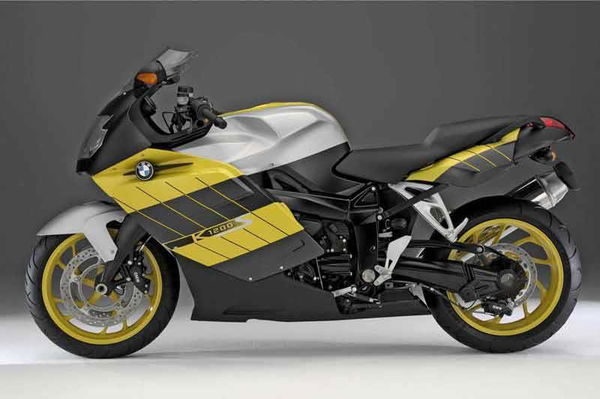
2007-2017 BMW K1200S (K1300S) – 167bhp (173bhp)/178mph (179mph)
BMW’s 1997 K1200RS with its longitudinally-mounted, four-cylinder, 130bhp engine proved that the German marque could finally produce a big-power sports-tourer. But the all-new machine which followed, the K1200S, with its new transversely-mounted four-cylinder engine took the Bavarian marque into hyperbike territory for the first time. The new 1157cc four produced a whopping 167bhp, its long chassis complete with BMW’s novel ‘Duolever’ front and ‘Paralever’ rear suspension systems was utterly planted and stable and, as with all BM’s it was (potentially) well equipped. Most of all, though, decent aerodynamics also meant it was fast – nudging 180mph in its initial 1200 form then an even more impressive 173bhp from the enlarged 1298cc version from 2009, which also, incidentally, was the first BMW to revert to a conventional single indicator switch after the firm’s persistence with three separate switches since the early 1990s. No, the S was never quite as quick or the overall king when it came to outright speed, but as a style of bike it was certainly up there with the best and remains worthy of consideration as a used buy today.

2006-2012, Kawasaki ZZ-R1400 – 187bhp/187mph
With the all-new ZZ-R1400, as first launched in 2006, Kawasaki proved that, although the race to chase the ultimate in outright speed was now over, that didn’t mean that was the end for more advanced hyperbikes. Although electronically limited to 300kph/187mph, the all-new ZZ-R raised the bar in terms of power, acceleration and all-round ability – so much so that it prompted further revisions to its main rival, Suzuki’s Hayabusa, and even led to a significantly revised new ZZ-R14 in 2012. At the heart of the new ZZ-R was, of course, a monster engine that was the most powerful mainstream motorcycling had yet seen. Its 1352ccs aided by ram air resulted in a whopping 187bhp under normal conditions and a claimed 197 at speed due to the ram air. This nestled in an all-new aluminium monocoque frame with quality suspension, aerodynamically-formed all-enclosing bodywork and a llong, low but stable gait that had more than a shade of drag strip about it. The overall result, although unable to claim the outright ‘fastest’ tag was universally acclaimed to be quicker accelerating, more powerful, more sophisticated and, for most, ‘better’ than the by then long-reigning ‘Busa, in turn leading to a new Suzuki the following year…
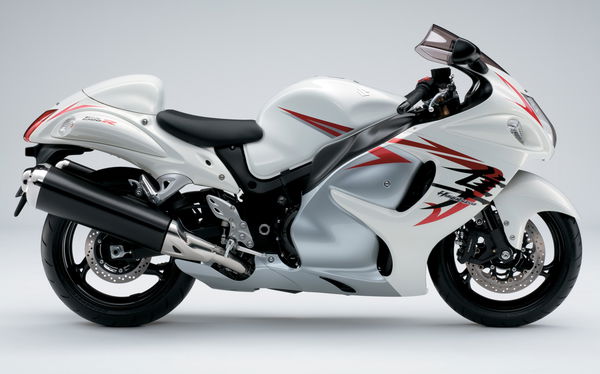
2007-2018, Suzuki GSX1300R Hayabusa – 194bhp/187mph
In a bid to keep its long-reigning Hayabusa ahead of the pack Suzuki gave its reigning speed king a significant overhaul in 2007. In came a slightly enlarged 1340cc engine which helped raise claimed peak power to 194bhp, so leap-frogging Kawasaki’s ZZ-R1400. While in addition there was updated, although evolved, styling, new exhausts, three new electronic riding modes, improved suspension and brakes, and a new dash. The frame and steering geometry, however, was largely unchanged. It was enough to leap back in front of Kawasaki’s ZZ-R14, certainly in terms of power, although in most other respects there was little between them. In 2013 this ‘Busa was then updated again gaining ABS and new, more powerful Brembo brakes before finally falling foul of Euro4 in 2018. Suzuki has now, for 2021, give its legendary Hayabusa a thorough, Euro5-friendly overall.
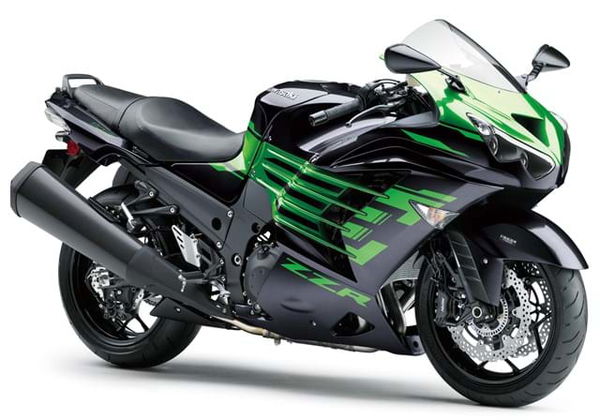
2012-2020, Kawasaki ZZ-R1400 – 200bhp/187mph
Like Suzuki had with its 2007 Haybusa, Kawasaki gave its range-topping hyperbike, the ZZ-R1400, a thorough update in 2012. The most significant change, unsurprisingly, was the engine: effectively an all-new unit with a longer stroke and raised compression, the now 1441cc four-cylinder now put out a claimed 200bhp – with more to come (210bhp) at speed with the effect of ram air. Nor was that the only change, the electronics now included three riding modes, traction control and a slipper clutch, suspension was improved front and rear to give handling that was far more nimble than the ZZ-R’s bulk and length suggest, instruments were updated, too, and the styling was given a subtle refresh, too. In short, up to the arrival of the new 2021 Hayabusa, Kawasaki had been back on top when it came to Kings of Speed hyperbikes, which was perhaps appropriate as the firm’s ZX-10 had kicked it all off 30 years earlier. However, with the new ‘Busa, and the demise of the ZZ-R, which won’t be sold after current stocks expire, that’s now certain to change…
